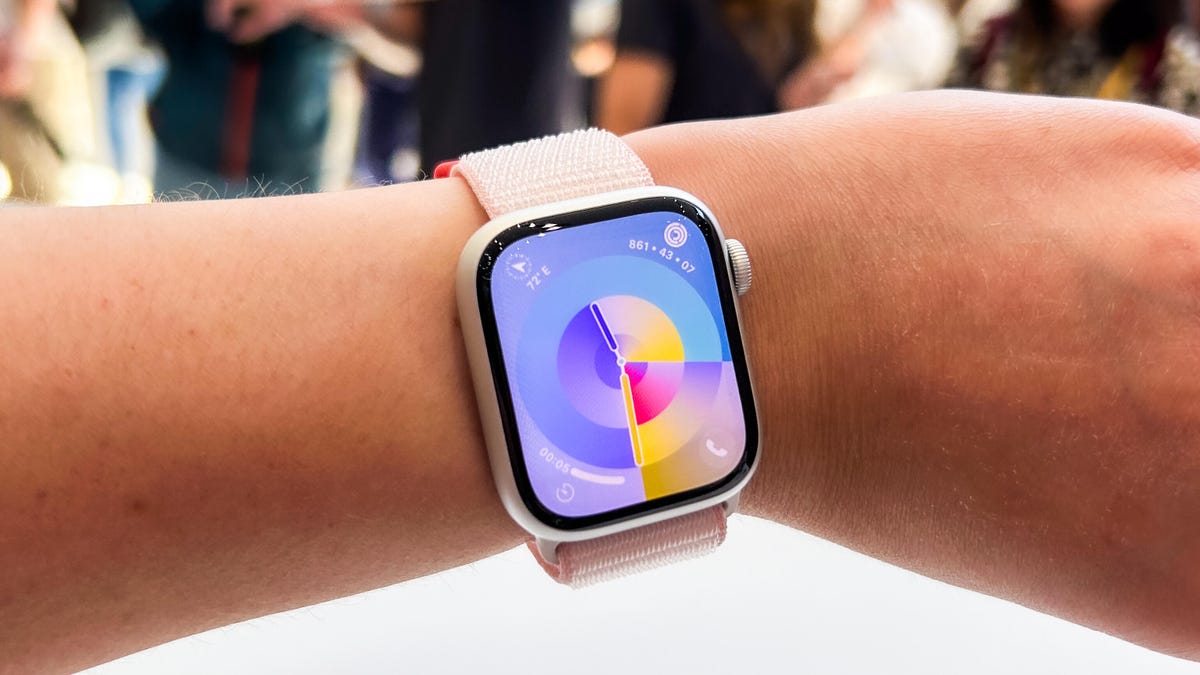Apple Watch 9 Feature Comparison vs. the Series 8, Series 7 and Series 6
Here's everything in Apple's new mainline watch and what it has to offer versus the Apple Watches of years past.

The Apple Watch Series 9.
At its Wonderlust fall 2023 devices event, Apple launched the Apple Watch Series 9, its newest model in its smartwatch line. While it doesn't have all the bells and whistles of the super-premium Apple Watch Ultra 2, also announced at the event, the Series 9 improved on several features of its predecessors. Here's how the Apple Watch Series 9 ranks versus the Series 8, Series 7 and Series 6 watches.
At the moment, Apple has temporarily stopped selling its Series 9 watches in the US amid an ongoing legal battle with health tech company Masimo over patent infringements. You can still buy it from other retailers, or from Apple outside the US, and existing Series 9 watches should continue to function normally. Read our guide on the issue for more information.
The Series 9 looks like the Apple Watches that came before -- a rectangular watch with a large screen and digital crown on the right side with a button just below it. It uses 20mm interchangeable watch bands, just like its predecessors.
But since the Apple Watch Series 6 was released in late 2020, Apple's smartwatches have gotten slightly larger and displays have gotten bigger. The wearables have added health-tracking features, new perks and faster processors, too.
The Series 6 introduced an SPo2 sensor for tracking blood oxygen, which is a key indicator of sleep quality, as lower levels could indicate conditions like sleep apnea that deplete rest (and if untreated, could be dangerous). The Series 6 inherited the always-on display from the Series 5, which is a neat but battery-sapping feature that set the stage for Apple Watches to come. Despite more hardware and software efficiency in later watches, new features have led every Apple smartwatch to maintain a steady single-day battery life that needs recharging before bed.
The Series 7 that launched in 2021 slightly bumped up the sizes offered to 41mm and 45mm, up from 40mm and 44mm in its predecessor. Paired with slimmer bezels, the Series 7 had a noticeably expanded screen size enough to fit a full QWERTY keyboard. The Series 7 also added fast charging, which Apple says can recharge a watch from a dead battery to 80 percent in around 45 minutes.
The Series 8 arrived in 2022 with a skin temperature sensor, a new health feature that measured overnight deviations from a temperature baseline to potentially detect changes in ovulation or menstruation. While more health data is nice, the Series 8 doesn't give much guidance on what the skin temperature variations mean, CNET Senior Editor Lisa Eadicicco found, as opposed to the more helpful "readiness score" found in the temperature-sensing Oura ring smart wearable.
Read more: I was a Superman for a week, according to my Apple Watch
Apple's brand-new smartwatch, the Series 9, packs a handful of new features that build on its predecessors, but also look forward to a new era of Apple devices. Conventionally, the new S9 chip enables new perks, namely on-device processing for Siri so users can get query answers even when offline. A new second-generation ultra-wideband chip on the smartwatch will also allow it to find nearby missing iPhones by pointing the way and sending vibrations and audible chirps when users are close.
The big new feature is Double Tap, which interacts with the watch through gesture control, no screen touching required. The Series 9 recognizes when the wearer taps their index finger and thumb together twice, which takes the place of a primary button in an application -- use it to answer calls, pause or play music, snooze an alarm and more.
The actual science is pretty cool, as the Series 9 actually detects the movements and changes in blood flow when the wearer pinches their index finger and thumb twice. The on-device neural engine uses data from several sensors to recognize this movement, including the accelerometer, gyroscope and optical heart sensor. It's a showcase for what an Apple Watch can do with its growing array of sensors.
Practically, Double Tap has another purpose, as others have pointed out: Training users to engage with gesture control in preparation for relying on it to use the upcoming Vision Pro. Users interact with Apple's AR/VR headset entirely through gestures, including a forefinger-and-thumb pinch. What better way to clue first adopters (who will likely rush out to buy a Series 9 or the Apple Watch Ultra 2, which also has Double Tap) in on Vision Pro's interface before it launches early next year?
Read more: Apple Vision Pro hands-on: Far better than I was ready for
Lastly, the Series 9 adds something else to Apple Watches, and indeed, to Apple's entire device lineup: Its first carbon-neutral product from the company. By selecting certain cases and bands made with recycled materials, and thanks to changes in using more green energy during manufacturing and lower-emission shipping options, the Series 9 watch you pick up at a store or order online can be the most sustainable Apple product you've ever bought -- and hopefully a sign of things to come for the tech giant.

